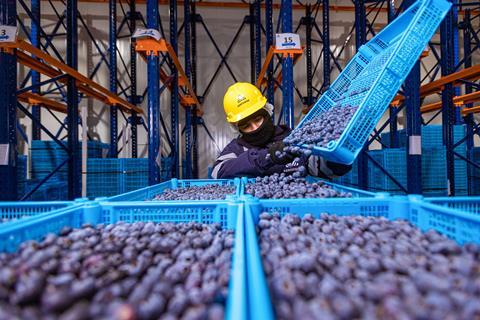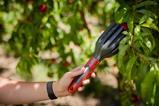A predicted IPO might be seen as a high-stakes bet on the future of fresh berries, but there is also plenty to be gained

Agrovision changed its name this week to Fruitist. Why? Many believe the berry powerhouse is gearing up to go public – some say as early as June – in what could be one of the fastest and most exciting IPOs in the history of the fresh produce business. A change of name isn’t essential, but as with AirBnB and Snap Inc, it can definitely help sharpen investor interest.
Since it was founded in 2012, Fruitist has achieved phenomenal growth, especially with its top-quality blueberries. In 2024, its total revenue topped US$400mn and the company is now valued at over US$1bn. And as it has grown, it has cut its corporate cloth accordingly with a bunch of impressive c-suite appointments – witness the additions of CTO Jim Trahanas from McKinsey & Company, former KitKat champion Fadi Karam as CMO, and chief people officer Scott Domann, who counts Disney, Warner Bros, Facebook, Netflix and Spotify among his previous employers.
Now it is taking Goldman Sachs’ advice on a possible next step. Should it proceed with the listing, it would make history as one of the fastest-growing fruit companies ever to enter the public market. And while its potential for success is undeniable, the speed with which that IPO may come to fruition raises one or two questions.
The first, I would suggest, is why so fast? Fruitist’s planned IPO timeline is notably aggressive. Just 13 years from its foundation, going public now would be in stark contrast to other produce giants that took decades – 170 years in Dole’s case – to build the scale and brand recognition they have today.
Fruitist, you could argue, stands on the shoulders of those giants and has been able to fast-track its development. It has developed excellent products, recruited good people, and secured the right industry knowledge. As such, it has modelled its growth on the success of other club models like Pink Lady apples, Zespri kiwifruit, and Sun World grapes, operations built around the inherent value of licensed and protected premium varieties.
And the resulting rapid growth trajectory has been aided by the vertical integration of production, packing, shipping, and marketing across multiple global markets. The fact that it has sustained massive production in Peru and simultaneously expanded into new countries of origin like Morocco, Egypt, China and India has certainly impressed the rest of the berry business.
But it’s precisely that speed which may introduce not only excitement but also apprehension for potential investors.

Riding the waves
The other big question is, what are the risks? Well, where to start? A successful IPO would need to ride waves of market volatility caused by inflation, war, logistical and labour challenges, climate change, and of course the surging wake of Trump’s Liberation Day dive-bomb. Agriculture is far from immune to the cyclical ups and downs of an international market, and that’s before any additional US import duties come into play.
Going public also means intense scrutiny from without and within. Instead of reaching agreement around the boardroom, Fruitist will answer to shareholders who demand consistent earnings growth. And when economic cycles are long and unpredictable, as they can be in fresh produce, that creates tension.
Pressure to meet earnings expectations can also mean a focus on short-term gains at the expense of long-term, capital-intensive growth. Building new farms won’t be so easy in future. In Fruitist’s case, maybe that’s why so much work on that front has already been done.
Yet despite the risks, there’s a strong argument that now might be the ideal time for Fruitist to go public. Even before the latest tariff drama, investors have increasingly sought out safer bets amid the economic uncertainty, and a company built on the supply of premium, health-enhancing products to the world’s emerging middle class does seem like a very stable proposition.
What’s more, the current volatility could play to Fruitist’s advantage. A quieter and weaker market could allow the company to stand out better and even price itself more conservatively, making it an attractive entry point for investors who buy into the company’s long-term growth plan and, as CNBC expert Jim Cramer might say, “wait for the rebound”.
The bottom line is that Fruitist’s rumoured IPO is a thrilling prospect for the produce sector, albeit one that is not without risks. With careful timing and execution, the company could emerge as a really strong player and indeed a champion for fresh produce in general, attracting new opportunities in the short term as well as longer term, strategic investors. The stakes are high, but so too are the potential rewards.












